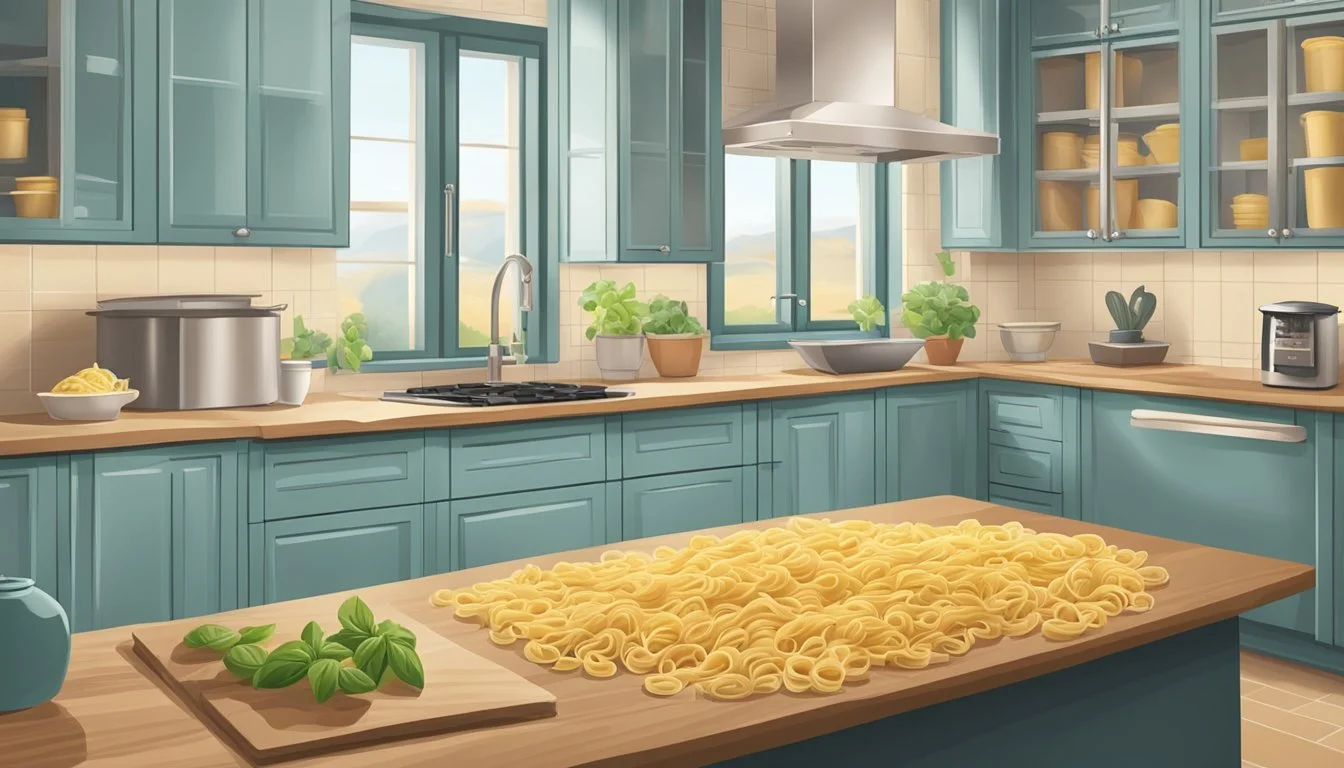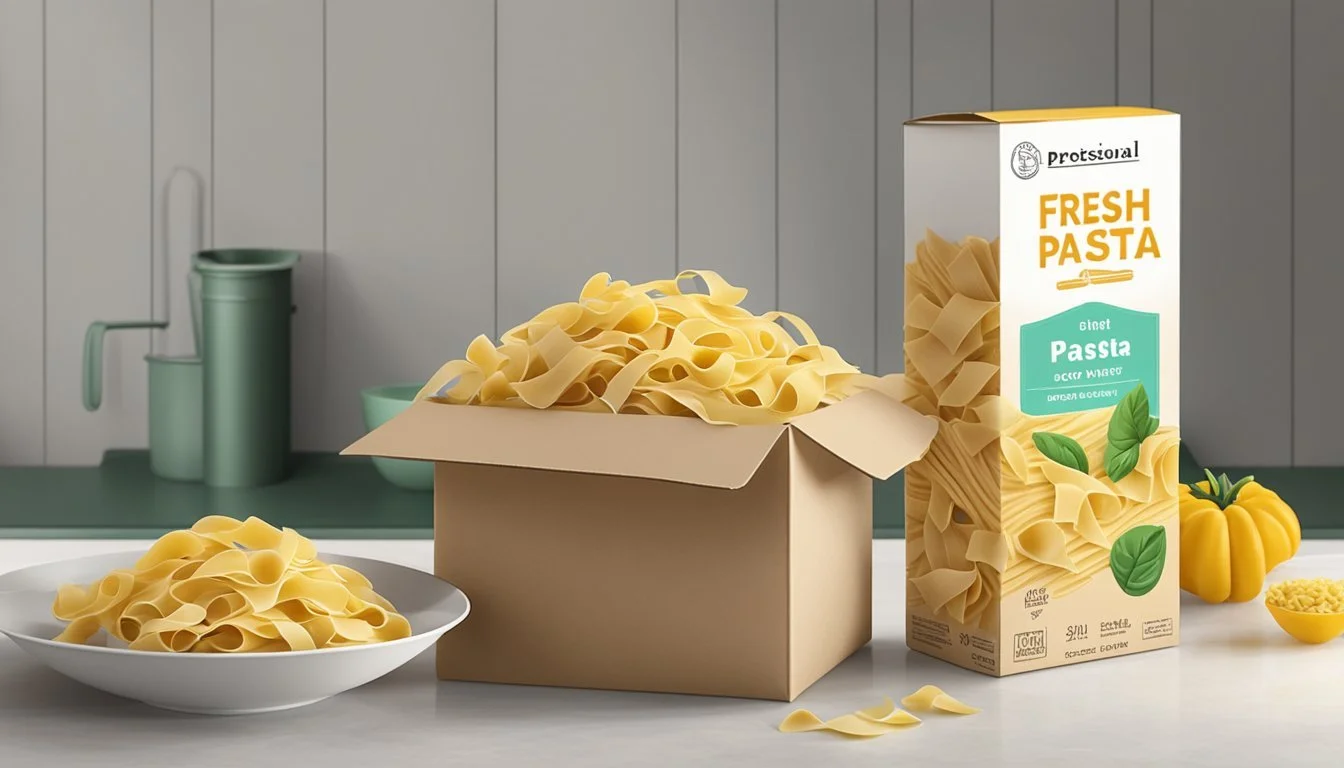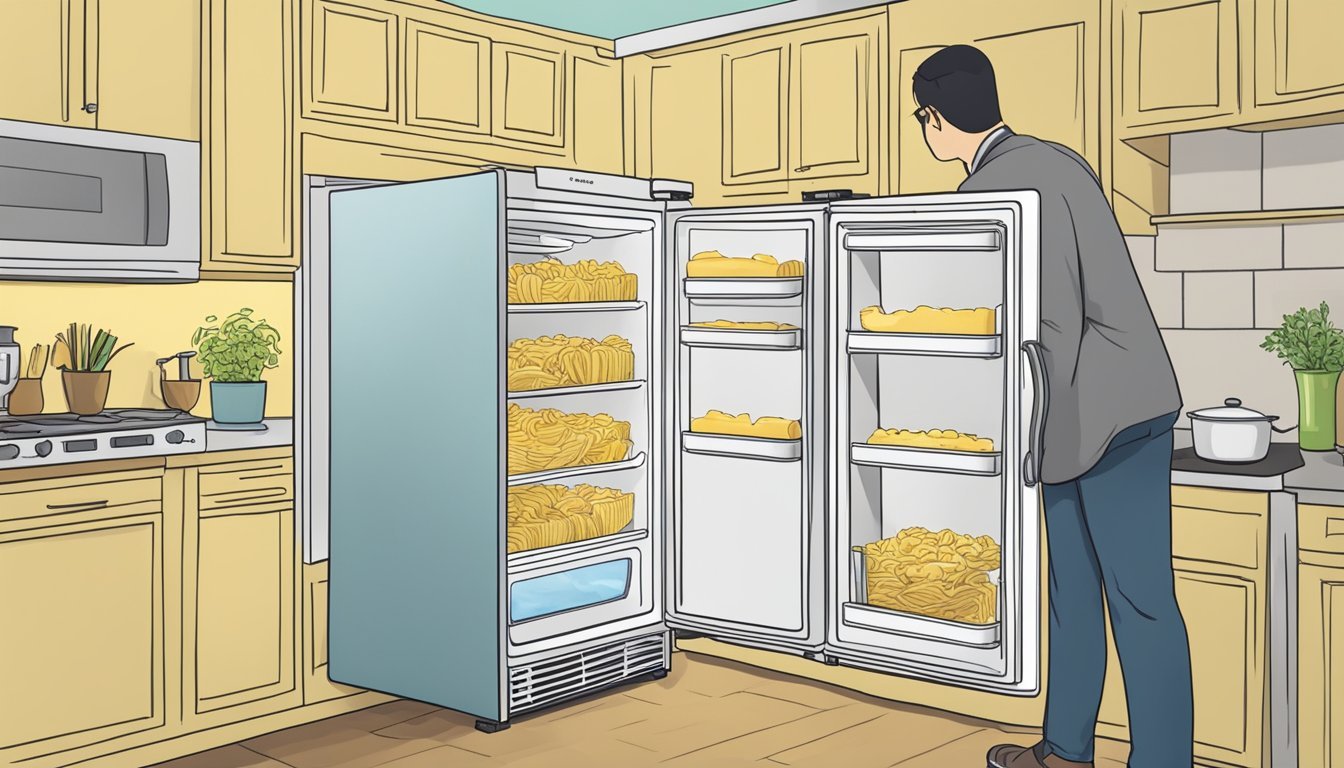Do I Have to Refrigerate Fresh Pasta?
Understanding Proper Storage
Fresh pasta, celebrated for its tender texture and flavor, is a delicate product that requires careful handling to maintain its quality. It differs from its dried counterpart in both composition and shelf life. Since fresh pasta contains more moisture, it becomes susceptible to bacterial growth at a faster rate if not stored properly. The standard safety protocol recommends that fresh pasta (What wine goes well with pasta?) should indeed be refrigerated if it's not to be cooked immediately. Refrigeration slows down the growth of bacteria, ensuring that the pasta retains its quality and remains safe to consume.
Storing fresh pasta in the refrigerator is not just about safety; it's also about preserving its desirable texture and flavor. When kept at room temperature, fresh pasta may become sticky and may degrade in quality much faster. In the refrigerator, however, it remains pliable and keeps its delicate flavor profile intact for a brief period. Typically, fresh pasta can be stored in the refrigerator for a couple of days, which is considerably shorter than the lifespan of dried pasta. This storage method is ideal for those who wish to prepare their pasta meals within a short timeframe.
For those planning to keep fresh pasta beyond a few days, freezing offers a longer-term solution. Freezing can extend the shelf life of fresh pasta while still maintaining its texture and flavor upon thawing and cooking. Pasta should be frozen on a tray initially and then transfer to an airtight container or freezer bag to prevent freezer burn and absorption of odors. When the time comes to cook, the pasta can usually be boiled directly from frozen, making it a convenient option for quick and easy meal preparation.
Understanding Fresh Pasta
Fresh pasta is a versatile culinary delight, appreciated for its tender texture and ability to absorb sauces. Its shelf life and storage requirements hinge on its ingredients and moisture content.
Types of Fresh Pasta
Fresh pasta comes in two main varieties:
Homemade Pasta: Typically combining flour, eggs, and water, homemade pasta is known for its freshness and lack of preservatives.
Store-Bought Pasta: This pasta may contain additional ingredients to extend its shelf life and often has a lower moisture content than homemade versions.
Both types of fresh pasta offer unique tastes and textures, influenced by their specific ingredient compositions.
Factors Affecting Fresh Pasta Freshness
The freshness of fresh pasta is primarily impacted by:
Ingredients: Eggs are a common binding agent in fresh pasta, rendering it more perishable due to the protein content.
Moisture Content: Higher moisture content in fresh pasta accelerates spoilage, necessitating proper storage, typically refrigeration, to prolong its freshness.
Depending on these variables, fresh pasta's susceptibility to bacterial growth and spoilage will vary. Store-bought fresh pasta generally lasts longer than homemade variants due to lower moisture levels and added preservatives.
Proper Storage Methods
When storing fresh pasta, one should use methods that preserve its quality and extend its shelf-life. These techniques range from refrigeration to freezing and drying, each suitable for different durations of storage.
Refrigerating Fresh Pasta
Refrigerating fresh pasta helps in keeping it fresh for short-term use. One should store fresh pasta in an airtight container or cover it with plastic wrap to prevent it from drying out. Typically, fresh pasta can last in the fridge for 1-2 days.
Place pasta on parchment paper.
Cover with plastic wrap or place in an airtight container.
Store in the fridge for up to 2 days.
Freezing Fresh Pasta
For longer storage, freezing is an appropriate method. First, let the pasta air dry slightly; this prevents clumping when the pasta is frozen. Then, place the pasta on a tray lined with parchment paper in the freezer for a couple of hours before transferring it to an airtight container or a freezer bag.
Dry pasta at room temperature for 1 hour.
Lay out on parchment paper and place in freezer for 2 hours.
Transfer to airtight container or freezer bag.
Fresh pasta can be stored in the freezer for up to 2 months.
Drying Fresh Pasta
One can also dry fresh pasta completely if they plan to store it in the pantry. Pasta should be laid out on a drying rack or a similar airy surface to dry evenly. Ensure the pasta is fully dry, which may take 24-48 hours, before placing it in an airtight container.
Spread pasta over a drying rack.
Allow pasta to dry completely, which may take 24-48 hours.
Store in an airtight container in the pantry.
Storing Homemade Pasta
When storing homemade pasta, whether uncooked dough or cooked pasta, timing and proper storage techniques are crucial for maintaining freshness and texture. One must ensure that the pasta dough is adequately kneaded and that the pasta maker is used effectively for optimal results before proceeding to storage.
Storing Uncooked Pasta Dough
Temperature and air exposure are critical factors when it comes to storing uncooked pasta dough. After the dough has been thoroughly kneaded, it can be:
Refrigerated: For short-term storage, wrap the dough tightly in plastic wrap and place it in the refrigerator. This method is ideal for dough that will be used within a couple of days.
Frozen: For long-term storage, the dough can be frozen. First, shape the dough into a disk to reduce thickness and wrap it with plastic wrap followed by aluminum foil to prevent freezer burn. It can be stored this way for up to one month. To use, thaw in the refrigerator overnight before rolling out with a pasta maker.
Storing Cooked Homemade Pasta
After cooking homemade pasta, prompt cooling and storage are key to retain its quality. Follow these steps for storing cooked homemade pasta:
Cooling: Rinse cooked pasta under cold water to stop the cooking process. Drizzle a small amount of olive oil and toss lightly to prevent sticking.
Refrigerating:
Place the pasta in a container lined with parchment paper.
Sprinkle a light dusting of flour or semolina on the pasta if it is particularly sticky.
Store in the refrigerator for up to 3 days.
Freezing:
For freezing, lay cooked pasta on a baking sheet in a single layer and freeze for a couple of hours before transferring to an airtight container or freezer bag to prevent clumping.
Pasta can be kept in the freezer for up to one month and reheated directly from frozen.
Storing Store-Bought Fresh Pasta
When dealing with store-bought fresh pasta, proper storage is essential to ensure a desirable shelf life while retaining quality. The pasta typically comes in packaging that may provide a sell-by date serving as a helpful guideline for storage duration.
Refrigerating Store-Bought Pasta
For short-term storage, refrigeration is the recommended method. The pasta should be kept in its original packaging to maintain freshness. If opened, it should be placed in an airtight container to prevent drying out and absorption of odors. Under refrigeration, store-bought fresh pasta can generally last for two to three days.
Freezing Store-Bought Pasta
For extending the shelf life, freezing store-bought fresh pasta is an effective approach. It should be done before any indicated sell-by date on the label to ensure quality. Pasta should be placed on a tray spaced out to prevent sticking and frozen for a couple of hours before transferring to an airtight bag or container. Frozen pasta can be stored for up to three months. When it's time to cook, the pasta can be prepared directly from frozen, adding only a minute or two to the usual cooking time.
Maximizing Shelf Life and Quality
To ensure the longevity and quality of fresh pasta, proper storage methods must be implemented. Freezing pasta correctly prevents freezer burn, while careful thawing and reheating are crucial for maintaining texture and flavor.
Avoiding Freezer Burn
To prevent freezer burn and maintain quality during long-term storage, a person should freeze fresh pasta as quickly as possible. It is recommended to:
Spread pasta evenly on a baking sheet to pre-freeze before bagging.
Transfer the pasta into a resealable freezer bag or a container with a tight lid, ensuring as much air as possible is removed.
Label the storage container with the date of freezing.
Thawing and Reheating Tips
When one is ready to use frozen pasta, correct thawing and reheating are essential:
Thaw pasta in the refrigerator overnight, keeping it in its original packaging to minimize exposure to air.
Gently reheat pasta by dropping it into boiling water for just a few seconds, or until it is thoroughly heated. This helps to preserve the pasta's delicate texture.
Serving and Pairing Fresh Pasta
When serving fresh pasta, achieving the perfect texture and flavor pairing is paramount. Fresh pasta's delicate nature calls for precise cooking and thoughtful sauce selection to enhance the dining experience.
Boiling and Sauce Pairing
For optimal results, one should cook fresh pasta in boiling water with a generous amount of salt. The boiling time ranges from two to four minutes, depending on the pasta's thickness. Once cooked to al dente, it is best to pair the pasta with a sauce that complements its fresh taste. For example, lighter sauces such as a simple tomato basil or a lemon butter sauce are preferable for thin pasta like angel hair, as they cling well without overwhelming the pasta's delicate texture.
For thicker pasta shapes like pappardelle or fettuccine, one might consider heartier sauces like a rich Bolognese or a creamy Alfredo. If the fresh pasta is served in nest shapes, ensure to separate the portions gently before cooking to prevent sticking.
Managing Leftovers
When dealing with leftover pasta, storing it correctly is essential to preserve its quality. For short-term storage, one can keep the pasta lightly coated in oil and covered in an airtight container in the refrigerator. This method will maintain the pasta's moisture and prevent clumping.
When reheating leftover pasta, a short stint in boiling water often suffices, but one must be careful not to overcook it. Alternatively, reheating with a sauce on the stove can revive the pasta's texture and amalgamate flavors. Either technique will ensure that the leftover portion doesn’t lose its original appeal and can be enjoyed as much as when it was freshly made.
Safety Considerations
When storing fresh pasta, one's primary focus should be on preventing bacterial and mold growth, which can lead to spoilage. Proper storage techniques are essential to maintain the pasta's safety and quality.
Preventing Bacterial Growth
Fresh pasta is a perishable item that provides an ideal environment for bacteria to thrive, particularly if it is not stored correctly. To minimize bacterial growth, fresh pasta should be refrigerated within two hours of preparation. Refrigeration slows down bacterial activity, substantially reducing the risk of foodborne illnesses. Fresh pasta can generally be safely stored in the refrigerator for up to two days. For longer storage, fresh pasta can be frozen for up to a month. To prevent dehydration and freezer burn in the freezer, one should store pasta in airtight bags or containers.
Storage Location Maximum Safe Duration Room temperature 2 hours Refrigerator 2 days Freezer 1 month
Identifying Spoilage
Spoilage is a clear indicator that fresh pasta is no longer safe to consume. Signs of spoilage include:
Change in color: Fresh pasta should discard if it shows any discoloration, such as a grey or green tint.
Off-odor: An unpleasant or sour smell is a strong indication that bacterial growth has occurred.
Visible mold: Any signs of mold growth on the surface of pasta are a clear sign of spoilage.
Slimy texture: A slimy film on the pasta can be the result of bacterial presence and is a sign that the pasta should not be eaten.
Spoiled pasta must be discarded immediately to prevent foodborne illnesses. It is important to regularly check fresh pasta for these signs, especially if it has been stored for a day or more.
Special Cases and FAQs
In this section, readers will discover the intricacies of storing various types of fresh pasta and find direct answers to some of the most commonly asked questions pertaining to their storage.
Storing Different Types of Fresh Pasta
Each type of fresh pasta, from ravioli to farfalle, requires specific storage methods to maintain its quality. Stuffed pastas like tortellini, due to their fillings, are more perishable and should be refrigerated immediately and can be stored for up to 2 days; they can also be frozen for longer preservation. Gnocchi should be either consumed promptly or frozen as its doughy consistency makes it susceptible to spoilage. Lasagna sheets can be kept refrigerated or dried in a dehydrator and then stored. It's critical to avoid direct sunlight and maintain these pastas at cool room temperatures before refrigerating or freezing to prevent bacteria growth.
Common Questions about Storing Fresh Pasta
Frequently, people are uncertain about fresh pasta's shelf life and proper storage methods. Here are some clear answers to these queries:
Can fresh pasta be left at room temperature?
No, fresh pasta should not be left at room temperature for more than a couple of hours to avoid bacterial growth.Is it necessary to use a dehydrator for drying pasta?
While not essential, a dehydrator can uniformly remove moisture, which is particularly beneficial when storing pasta for events or future use.How do you prevent fresh pasta from sticking together when frozen?
Before freezing, pasta can be lightly dusted with flour or initially laid out individually to prevent sticking.
Remember, the best storage method may vary based on pasta type, intended use, and duration of storage.







